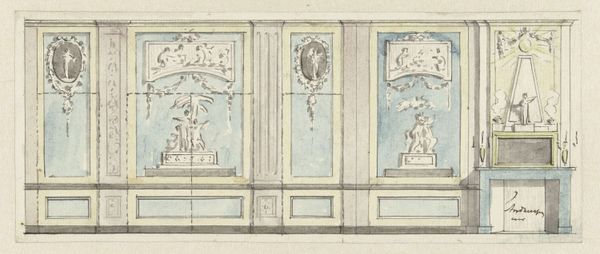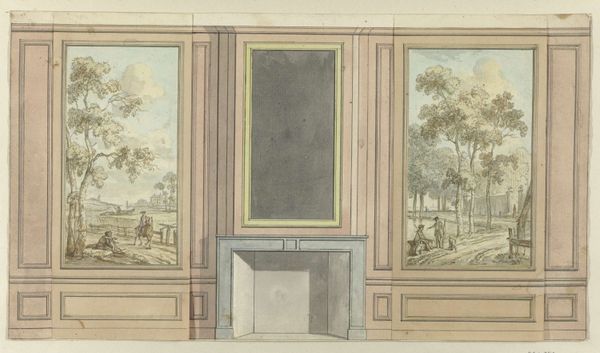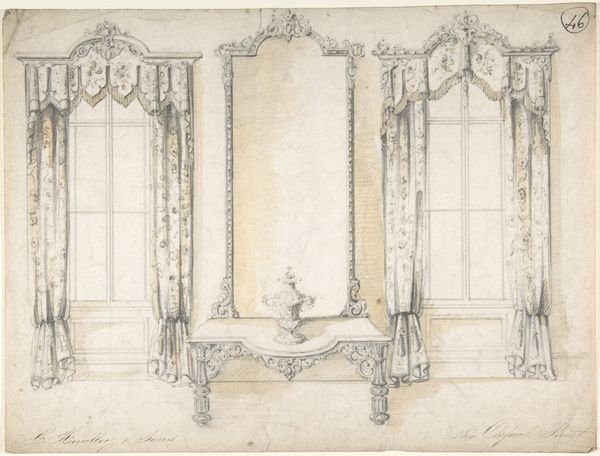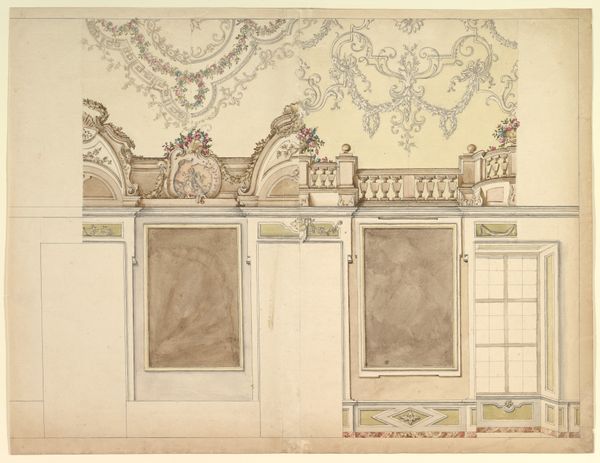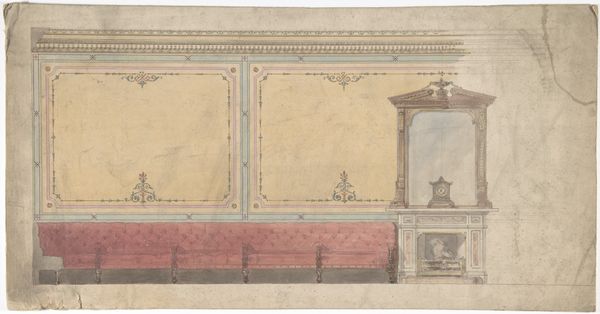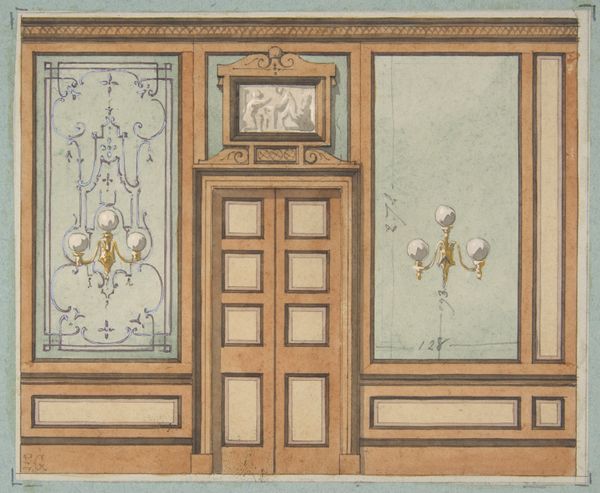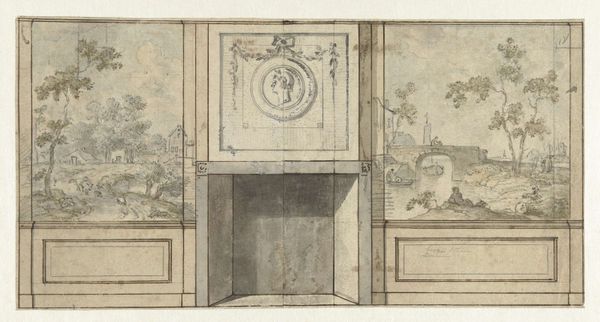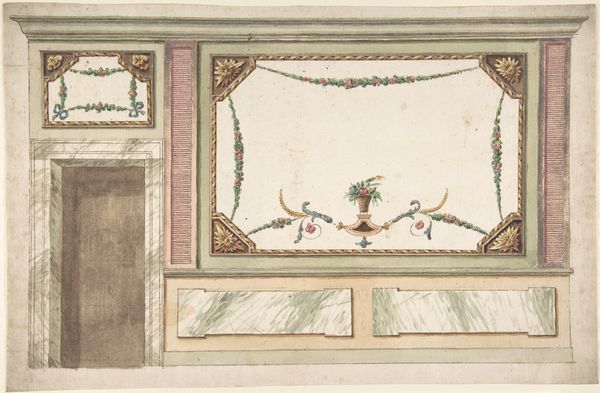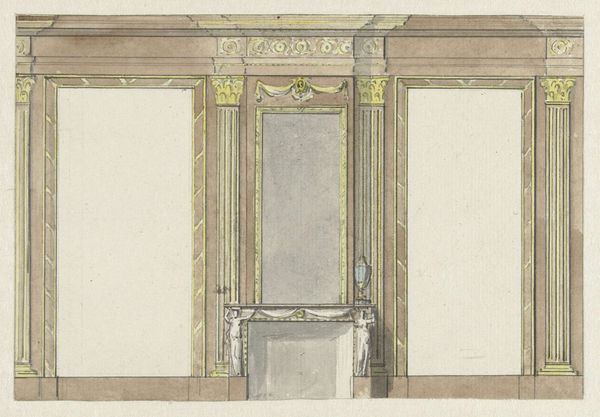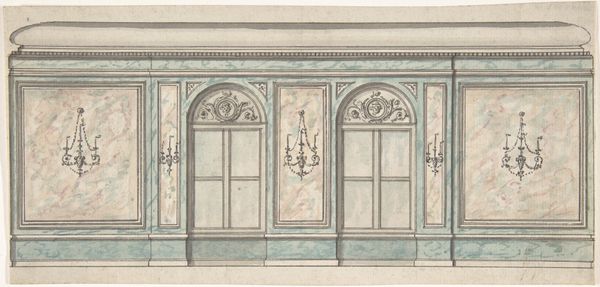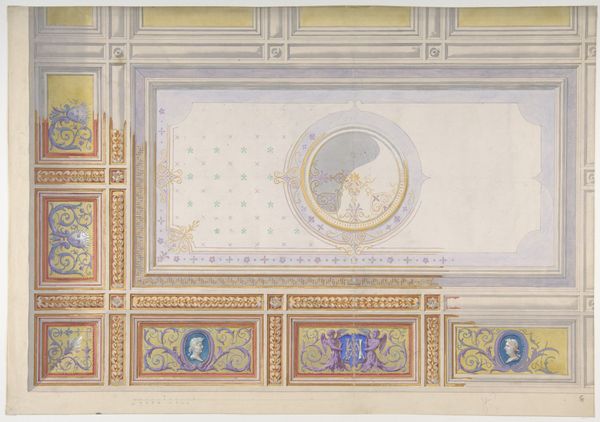
drawing, watercolor, architecture
#
architectural sketch
#
drawing
#
neoclacissism
#
aged paper
#
toned paper
#
homemade paper
#
light earthy tone
#
sketch book
#
landscape
#
watercolor
#
architectural section drawing
#
architectural drawing
#
architecture drawing
#
history-painting
#
architecture
#
warm toned green
Dimensions: height 117 mm, width 144 mm, height 79 mm, width 28 mm, width 49 mm
Copyright: Rijks Museum: Open Domain
Jurriaan Andriessen created this design for a mural for Gerrit Duijm using pen, brush, and watercolor around 1770-1799. The design is a glimpse into the domestic life of the Dutch elite during the late 18th century. The symmetrical composition, pastel colors, and classical motifs reflect the prevailing taste for French Neoclassicism. Yet, the landscapes on either side of the central mirror and fireplace, divided into tile-like squares, point to the importance of Dutch pictorial traditions and the fashion for chinoiserie. Wealthy Dutch families decorated their homes with imported Chinese porcelain and wallpaper. This design suggests a desire to integrate the exotic allure of the East with a more familiar, local identity. To understand this piece more deeply, we can consult period writings on interior design and architectural pattern books. We can also look at inventories of household goods and archival records of trade with Asia to reveal the social and economic context in which Andriessen’s design would have been understood. The mural embodies the complex negotiation between local identity and global taste.
Comments
No comments
Be the first to comment and join the conversation on the ultimate creative platform.
